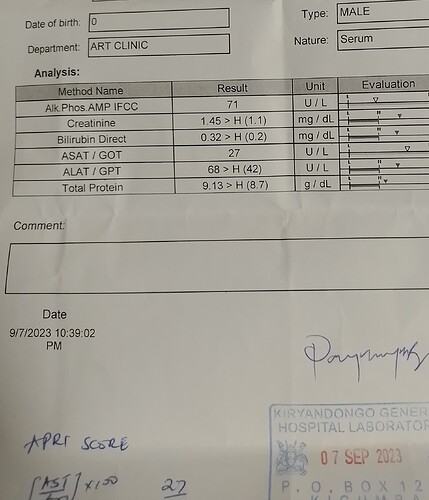Dear @Karp ,
See below in bold my replies:
From your reply to EH1999 (May 2022), is viral load a measure of what is in every blood cell circulating in the body? (Again, my old brain is not reading closely enough/retaining. I see, it’s per ml of blood, not every blood cell.)
In HBV infection, viral load (HBV DNA) is an aggregate measure of the replicative activity of HBV in the liver (there is very little replication of HBV outside the liver). HBV infection is not uniform in the liver; some liver cells are infected and produce virus and some liver cells are not infected.
Can an antiviral achieve a functional cure, and if so, does it rid the blood stream of all virus plus SVP’s? Would that apply to a spontaneous functional cure? (I did not catch the implications of part of the reply to Aman, 16 Feb “Unfortunately, these drugs do not target the production of HBsAg, which is why they are life-long therapies” before posting.) However, in a functional cure, is all the virus/HBsAg and are all SVP’s removed?
With approved antivirals, functional cure is rare. However, functional cure is achieved when production of SVPs by the liver is low enough that HBsAg cannot be detected by the assays in use (this is low enough that immune control remains constant). This is also the same with spontaneous functional cure.
It is important to note that with functional cure, inactive reservoirs of infection (cccDNA) are still present but persistently controlled. These can reactivate under conditions of severe immunosuppression (i.e. when taking immunosuppressive medication for autoimmune disorders or organ transplant).
Can it be determined from a Fibroscan score of 19.4kPa and CAP score of 266 dB/m what percentage of the liver has been damaged by fibrosis/cirrhosis?
No, these are aggregate measures of average liver condition. More detailed analysis of liver damage requires a liver biopsy.
With regard to the reversibility of fibrosis/cirrhosis, some sources suggest it’s reversible, particularly in reference to alcohol-induced hepatitis and steatotic liver disease, other sources say it’s not. Which is true and, either way, would it apply to cirrhosis in general; in other words, is cirrhosis cirrhosis, regardless of cause?
Fibrosis can be reversed but this usually occurs slowly (over several years) and only if the source of liver inflammation is removed. Reversal of fibrosis can also occur with effective suppression of HBV infection and following functional cure. Cirrhosis is a much more serious condition where significant structural alterations in liver tissue occur. In some cases, reduction of liver inflammation in cirrhosis can improve overall liver function but cirrhosis can persist (but in a more manageable form). Reversal of cirrhosis and its structural alterations does not frequently occur and when it does, this reversal is much slower than the reversal of fibrosis.
Thanks again for any insights.
[/quote]
